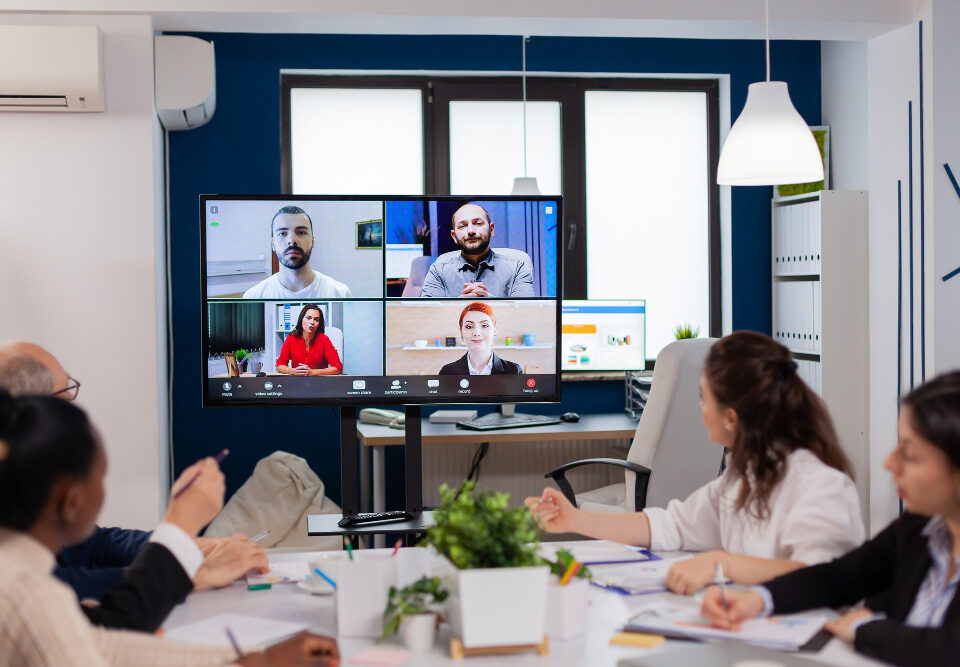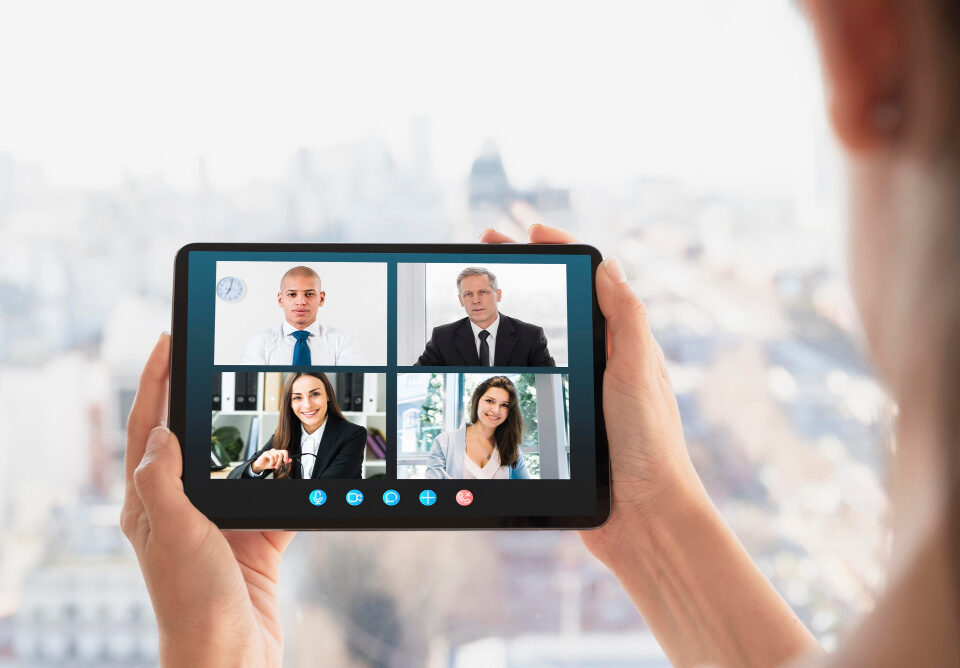- Have any questions?
- +971 4 88 733 70
- sales@datavoiz.com

The Impact of Video Conference System on Business Success
February 24, 2024
Video Conferencing: Transforming Business in the Virtual Era
February 26, 2024Introduction:
In this article, we explore the crucial elements of crafting a productive meeting room environment through collaboration. Professionals often face unproductive meetings, hindering progress. By delving into strategies for fostering collaboration, we offer insights to transform meeting spaces into hubs of creativity and productivity. Stay tuned for actionable tips to elevate your team gatherings and unlock the potential of collaborative meetings.
Importance of Collaboration:
Collaboration in a meeting room is vital for successful outcomes and innovation. When individuals share ideas, the synergy leads to breakthrough solutions, promoting unity and collective ownership. In today’s business landscape, harnessing collaboration is essential for sustainable success.
Designing a Collaborative Meeting Room Layout:
The layout crucially facilitates collaboration. Consider furniture arrangement, lighting, and acoustics. Opt for flexible seating to encourage movement and interaction. Strategic whiteboard placement enhances visual aids, and natural elements add creativity. Choose calming colors and adjustable lighting for a visually stimulating layout.
Embrace “form follows function” in design, where every detail contributes to teamwork and communication. An optimally designed meeting room elevates discussions for shared success.
Utilizing Technology for Collaboration:
Integrating technology revolutionizes collaboration. Video conferencing fosters inclusivity, breaking geographical barriers. Interactive whiteboards and digital platforms transform meetings into dynamic, idea-generating sessions, enhancing productivity and fostering innovation.
Creating a Comfortable Atmosphere:
To foster collaboration, create a functional and comfortable space. Incorporate ergonomic furniture, soft lighting, and calming color schemes. Plants boost mood and productivity, adding greenery. Nature-inspired elements create tranquility. Attend to details for a welcoming atmosphere that inspires and motivates participants.
Setting Clear Meeting Objectives:
Clear objectives are guiding stars for productive discussions. Define goals at the outset, empowering participants with a unified sense of purpose. Specific yet flexible objectives enable participants to contribute to overarching goals, fostering a collaborative spirit.
Encouraging Active Participation and Communication:
Active participation is essential for successful collaboration. Create a safe space for everyone’s voice, emphasizing clarity and conciseness. Empower team members to voice opinions, promoting diverse perspectives. Active participation enhances teamwork and problem-solving capabilities.
Implementing Time Management Strategies:
In a collaborative setting, establish clear agendas and allocate specific time slots. Visual aids like timers reinforce efficient time utilization. Designate a facilitator to monitor the meeting’s pace, ensuring discussions progress within allocated time frames. Manage time actively for efficient and enjoyable collaborative sessions.
Resolving Conflicts and Facilitating Constructive Discussions:
Approach conflicts calmly, encouraging open dialogue. Facilitate constructive discussions with communication guidelines that promote inclusivity. Conflict is an opportunity for growth and understanding among team members. Guide discussions toward common goals, emphasizing cooperation and understanding.
Fostering a Culture of Openness and Trust:
Encouraging openness without fear of judgment is crucial for effective collaboration. Leaders set the tone by modeling transparency and vulnerability. Inclusivity and acknowledging unique contributions foster a culture where everyone feels empowered to contribute.
Evaluating Meeting Room Performance :
Assess meeting performance by evaluating adherence to timelines and participant engagement. Solicit feedback through surveys or discussions. Use feedback for continuous improvement, adapting based on insights. Celebrate successes and view constructive criticism as an opportunity for refinement.
Conclusion:
As we draw to a close, fostering collaboration in meeting rooms is more than physical space or technology; it’s about creating an environment where individuals feel valued and empowered. By embracing open communication, setting clear objectives, and resolving conflicts constructively, teams can harness the power of collaboration for remarkable results.
For more info:





